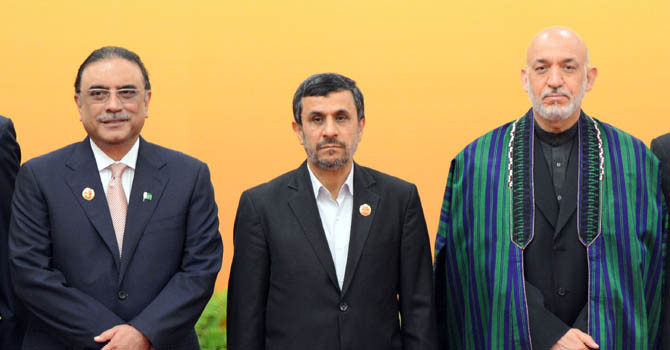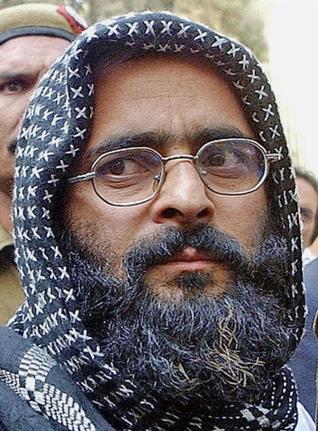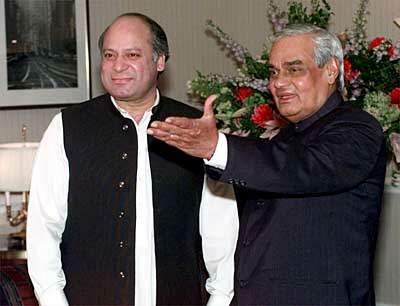Peace Watch » Editor's Take, Kashmir-Talk » 2014- Kashmir and Afghanistan
2014- Kashmir and Afghanistan
Z.G. Muhammad
Some fifty-nine years back Josef Korbel wrote, ‘India and Pakistan continue to dissipate their wealth, their strength and their energy on a near fratricidal struggle in which the hitherto almost unknown State of Kashmir has become the physical battleground.’ Trillions of dollars are spent on building arsenals at the cost of development of tens of millions living a sub-human life. People of the two countries have not been paying heavy prices for the wars and border clashes but even for stand offs. During 2002, only the army builds up across the LOC had cost 3.93 billion US dollars to India and 1.4 billion US dollars to Pakistan. The people of Kashmir province and hilly districts of Jammu province have suffered most- bullets, bombs have consumed more than hundred thousand during past twenty years, and figures of deaths and destruction during over past six decades have been more staggering. The dismal track record of human rights violations sends shudders down the spine.
In fact, with Kashmir at the centre India and Pakistan relations are a sad story of troughs and crests- more of troughs and less of crests. The two countries, having had a chequered history of war of attritions and protracted diplomatic standoffs had started a new inning in 2004 by launching broad based talks named as composite dialogue. This process had set an optimistic note in the relations of the two countries after initiating some Kashmir related CBM’s in 2005. Generating a hope of way forward in resolving the Kashmir dispute it held promise for improving relations between New Delhi and Islamabad. In November 2008, after terrorist attack in Mumbai New Delhi put the dialogue process on a hold. After fourteen months of belligerence in statements, there was a thaw in the frozen peace process in January 2010. The two countries besides working on tract two met at various levels- generating hope for adding a new chapter to their relations. New Delhi was insisting on focusing on trade, increasing people-to-people contact, strengthening cultural bonds, discussing less controversial issues and very subtly suggested ‘no talks on Kashmir.’ Pakistan agreed to the terms and conditions set by India for carrying forward ‘composite dialogue’. The statements of President Zardari and Foreign Minister, Hina Rabani testify it.
In sixty-five years, history of the two countries Pakistan for the first time granted MFN status to India but for some top Pakistan business houses seeing it to their disadvantage it got stalled. Seen in right perspective for three years Kashmir was never part of the dialogue process at the diplomatic or the political levels between the two countries- minus once or twice ritualistic reference. Going by the writings and columns in Pakistan a good number of Pakistani journalists, columnists including some English language newspapers had virtually turned lobbyists for New Delhi in Islamabad and Karachi and have been advocating for not making trade between the two countries subordinate to the resolution of outstanding issues between the two countries.
On Friday, 15 March 2013, the relations between the two countries apparently suffered the biggest setback when Indian Parliament Unanimously rejecting the resolutions passed by Pakistan National Assembly one day earlier condemning the hanging of Mohammad Afzal Guru asked Islamabad not to interfere in India’s internal affairs. Speaker Meira Kumar in Lok Sabha and Chairman Hamid Ansari in Rajya Sabha — both the Houses asserted that the entire State of Jammu and Kashmir, including the territory under illegal occupation of Pakistan, “is and shall always be an integral part of India”. Surprisingly, the resolution adopted by the parliament made no mention about Jammu and Kashmir territory under ‘occupation’ of China. The resolution in letter and spirit was replication of the resolution adopted by the Parliament on February 22, 1994. The Indian Parliament adopted this resolution at the height of militancy in the state. Kashmir, after having remained out of international gaze for decades together was once again making international headlines and Washington had once again started taking interest in the resolution of the problem- a nuclear flashpoint. The statements made by Assistant Secretary of State Rabin Raphael, Secretary of State, Madeline Albright and President Bill Clinton at various international forums during 1993 and 1994 indicated that Clinton was more interested in resolving the Kashmir problem than his predecessor.
Seen in historical context, the stated positions and Parliament resolution have not debarred the two countries from holding talks, debating and discussing the resolution of the Kashmir problem. Despite the 1994 resolution passed by the parliament pos New Delhi and Islamabad held talks for resolution of the ‘dispute’ at various levels including the track two. In 1997, the dialogue suspended in 1994 was reopened at the level of foreign secretaries. In May 1997 Prime Minister, Inder Kumar Gujral and Pakistan Nawaz Sharif met in Mali and discussed Kashmir- followed by meeting at foreign secretaries and another meeting between Prime Ministers at New York. In February 1999, Indian Prime Minister Atal Bihari Vajpayee travelled to Lahore and signed Lahore declaration. I am not to do debate here negative implications of this declaration on the Kashmir problem that in the words former Pakistan Foreign Minister Abdul Sattar ‘provided convenient alibi to world opinion and especially influential powers, to abdicate responsibility to promote a just settlement of Kashmir.’ ‘Prime Minister, Atal Bihari Vajpayee on new year day 2001 wrote an article highlighting the need for Indis to address two outstanding issues, namely, Kashmir and Babari Masjid in Ayodha. Regarding Kashmir, he went on to suggest a meeting with the Pakastani President.’ To quote him:
“ India is willing and ready to seek a lasting solution to the Kashmir problem. Towards this end, we are prepared to re-commence talks with Pakistan at any level, including the highest level, provided Islamabad gives sufficient proof of its preparedness to create a conducive atmosphere for a meaningful dialogue.”
The article My musings from Kumarakom by Prime Minister, Vajpayee published generated lot of debate and nearly after four months he sent an invitation to President of Pakistan meeting in on 15 and 16 July in Agra. The one to one deliberation between Prime Minister of India and President of Pakistan was successful and the two had reached almost reached an agreement to be signed. Some powerful cabinet ministers within the Vajpayee government defeated it. The 2004 meeting between Vajpayee and Musharraf was breakthrough that laid foundation for meeting between Manmohan Singh and Musharraf- debating out of box solution for Jammu and Kashmir. In retrospect when seen the 1994 resolution adopted by Indian Parliament- with all its strong wordings and unanimous could not stall future discussions between the two countries. So holds true about the resolution adopted on 15 March 13.
True, the immediate provocation for the resolution adopted by the Indian Parliament has been the resolution adopted by Pakistan National Assembly on hanging of Afzal Guru and the after situation in Kashmir. Nevertheless, it does not mean before the Afzal Guru resolution, all was honky dory between the two countries. In fact, the ‘slowing down of the India-Pakistan normalization’ that largely went unnoticed started much earlier. Many important decisions that would have helped in building the much-needed trust between the two countries were paused. The gains- though small made during four years of peace process were one by one collapsing. The visa liberalization agreement signed during September 2012, with great fanfare was suspended. The meeting on the Tulbul Navigation Project/ Wullar barrage between the secretaries was cancelled. The track two discussions to be held in Delhi in February were cancelled after visa to the participants from Pakistan was refused. Prime Minister, Manmohan Singh very subtly put an end to the three years peace process by stating that it would not “business usual with Pakistan now”. Attributing the set back to the normalization of relations between the two countries to frenzied coverage by New Delhi media to border hostilities a Pakistani commentator recently saw, ‘A combination of factors having contributed to slackening in the pace of normalization’. In the opinion of the commentator , ‘ These included steps taken by India in the wake of recent incidents across the Line of Control (LoC) in Kashmir, onset of the election season in Pakistan and the consequent wait-and-see stance adopted by the Indian government, which is also under mounting political pressure ahead of its own elections.’ These do so seem ostensible reasons for reversal of normalization relation but the whole situation is overwhelmingly brewing for competing interests of the two countries in Afghanistan after the US withdrawal in 2014.
A study carried out by Barcelona Centre for International Affairs with the support of Norwegian Ministry of Foreign Affairs in Dec 2012 provides a an insight into as how the competing interests in Afghanistan are going to impact India and Pakistan relations and whole of the South Asia. Jammu and Kashmir, when read between the lines is sandwiched in these competing interests. The study has identified five specific regional powers as being critical to the future of Afghanistan and Pakistan- these include India, Iran, China, Russia and Saudi Arabia. The study sees other countries such as Central Asian States and Turkey as ‘implicated’ actors with real with real interests and concerns in relation to both countries, but do not have the same depth and level of implication and/or influence as the above “big five” regional powers. The study analysis interests and additional interest and highlights redline for all the five big countries its sees in competition in the region. To analyze the interests of all the five counties is beyond the scope of this column.
The study suggests India as having twelve primary interests and three additional interests in Afghanistan after 2014. ‘These include, Countering increased Pakistani influence over events in Afghanistan, engaging with the nationalist insurgency in Baluchistan and across the border in Afghanistan, regarded by some observers as a counterbalance to Pakistani ISI pro-Taliban support,Obtaining access to raw materials in Afghanistan to meet the needs of India’s growing population, ending the reported use of the Lashkar e Tayyeba as a proxy by the Pakistani ISI to act against India gaining the upper hand in Indo-China rivalry, which spills over into Pakistan, the Kashmir issue, in dispute with Pakistan (unresolved since 1947). The study apprehends Escalation in conflict with Pakistan over Kashmir.
There can be no denying that Afghanistan after the US and NATO troops pack, lock , stock and barrel politics after 2014. For geo-strategic position, it is going to be an important arena for key players in the region- like Iran, China and Russia, India and Pakistan. These will look for a role in the emerging scenario but competing for a role should not lead India and Pakistan on a collision course. The two countries for preventing a spillover from Afghanistan into these countries and inundating peace in the region should work for resolving the core issue. India’ s former Prime Minister, with more than fifty years experience had very rightly said:
“ A self-confident and resilient nation does not postpone the inconvenient issues of yesterday to a distant tomorrow. Rather, it strives to decisively overcome the problems of the past so that it can pursue its developmental agenda for the future with single-minded determination”
To see the development agenda- Islamabad and New Delhi should do away with policy procrastination and resolve the 65 year old ‘dispute’ on the basis of Justice and fair play.
An abridged version of this article was published in the Greater Kashmir on 17-3-2013
Filed under: Editor's Take, Kashmir-Talk · Tags: 2014, Christopher Snedden, Hurriyat Conference, Indo-Pak, Kashmir, Kashmir Dispute, peacewatch, Z. G. muhammad







